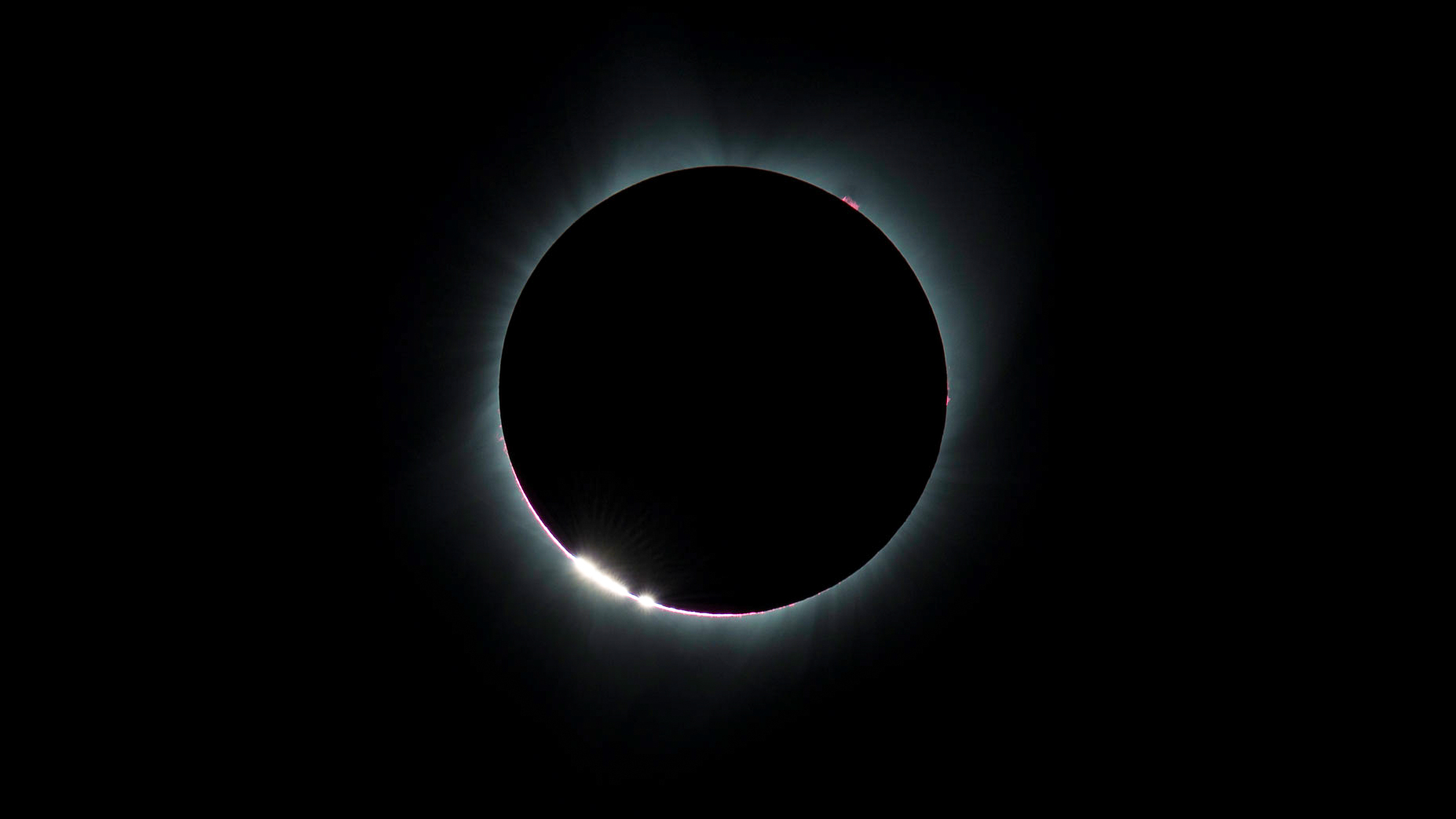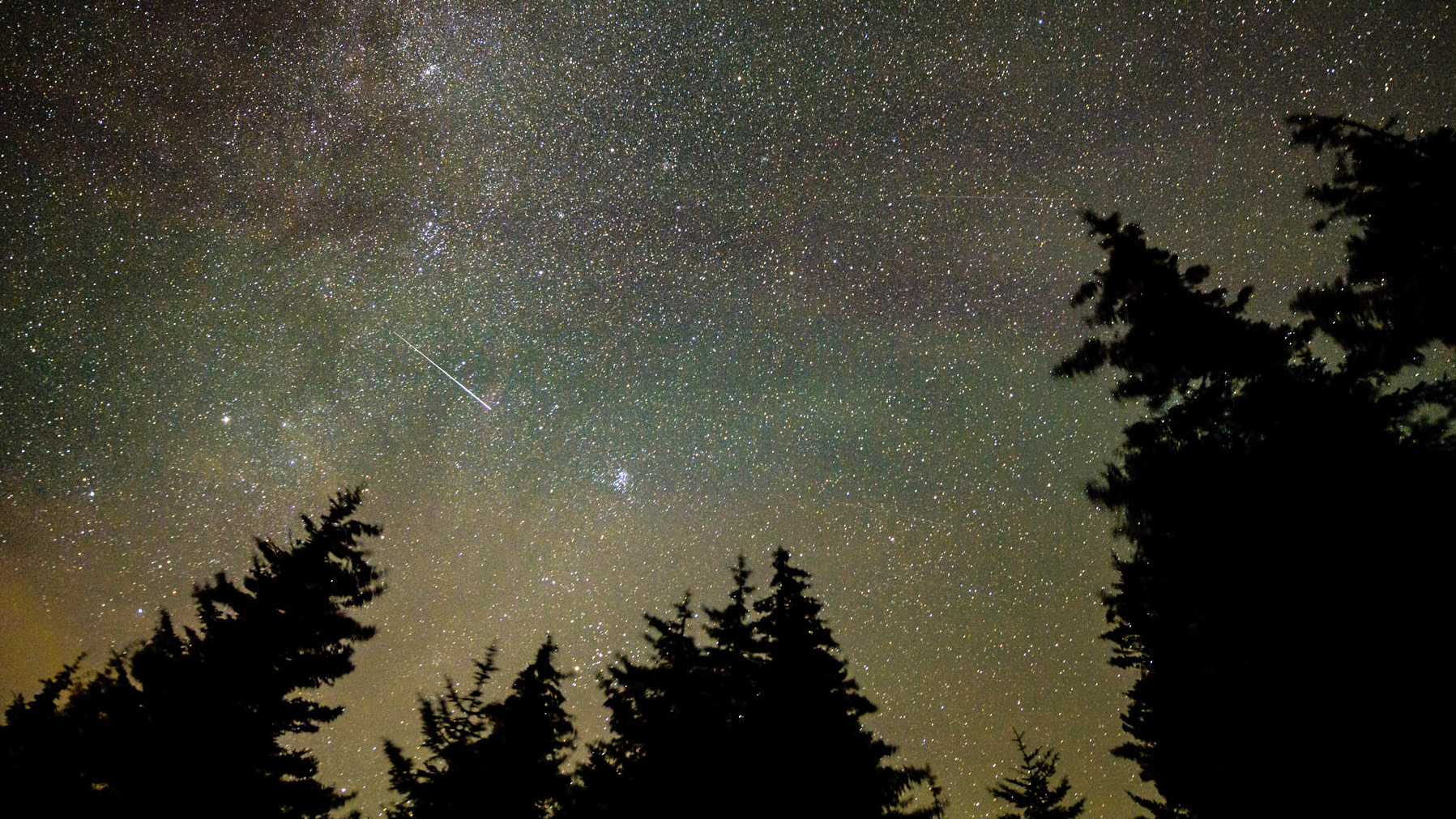
April 2023 brings an opportunity for perhaps the ultimate shot for any astrophotographer – a total solar eclipse – but only those who are prepared to travel to remote areas of the globe. For everyone else, the month is peppered with astronomical highlights, from the year’s first decent meteor shower to a rare conjunction of bright planet Venus and the Pleiades, surely one of the night sky’s most beautiful and most often photographed sights.
Add the rise of a full ‘Pink moon’ and plenty of opportunities to shoot the crescent moon and April 2023 is a great month to dust-off that camera and tripod and get outside looking up.
Thursday, April 6: a full ‘Pink Moon’

If you're not already an expert at photographing, the rising full moon each month and you're not trying hard enough. It’s mainly about being in the right place at the right time, so check your local moonrise time and be punctual at a location with a good view low to the eastern horizon (a second or third-floor window works well). The trick is to catch it as it appears draped on orangey hues alongside buildings or mountains in the distance. Use a 70-300mm lens, a tripod and a remote shutter release and experiment with short exposures – the rising full moon is a bright object indeed.
Read: How to photograph the full moon
Sunday-Monday, April 9-10: The moon occults Antares
Just before or after midnight depending on your location (use the Stellarium Web Online to check) look southeast you'll be greeted by a waning gibbous moon close to the brilliant Antares, the brightest star in the constellation of Scorpius. This red supergiant star is positioned directly above the Milky Way’s center. From North America only the moon will obscure Antares, causing it to vanish from sight for about an hour.
Tuesday, April 11: Venus and the Pleiades

The highlight of the astrophotography month for many will be this pass of Venus just 2.5° from the Pleiades (also called M45). Get yourself an unobstructed view of the western horizon immediately after sunset, but bear in mind that you’ll need to work fast because the planet and the Pleiades will sink below the horizon within an hour or so. If you’ve not yet tried to capture M45, here’s a great excuse. You can try a night either side, too, when Venus will be almost as close.
Read: The best cameras for astrophotography

Thursday, April 13: April’s dark sky window opens
Today it’s Last Quarter (or Third Quarter) moon, which sees our satellite half-lit from our point of view. Better still, it rises after midnight, and will rise about 50 minutes later each night for the next week. Cue this month’s dark sky window – which means it’s time for astrophotographers after nightscapes to get moving! If that’s not enough to get you roused, know that it’s also International Dark Sky Week.
Saturday, April 15: Crescent moon and Saturn
If you can hack the early start then there’s a pretty conjunction between Saturn and a 27%-illuminated crescent moon. The action happens low on the east-southeast horizon just before sunrise. You’ll need a wide-angle lens to capture them together.
Read: When to photograph the moon
Thursday, April 20: total solar eclipse

It’s a New Moon today, but this month it’s what it causes that will most interest astrophotographers. Occurring only once every 18 months or so on average, a total solar eclipse happens when a New Moon exactly covers the Sun, though only from a very narrow path of totality across Earth’s surface. That path is barely 60 miles wide today – about as narrow as it can ever be – and it crosses the tiny remote town of Exmouth in Western Australia as well as Timor Leste and West Papua. Expect jaw-dropping images from some of the 50,000 or so eclipse-chasers who will make the trip to the southern hemisphere.
Friday, April 21 and Saturday, April 22: A crescent moon, Pleiades and Venus
Across these two evenings, there will be a chance for astrophotographers to grab a wide field view of a slender crescent moon close to the Pleiades. Just to add to the spectacle, bright Venus will hang just above and dimmer Mercury below.
Saturday-Sunday, April 22-23: Lyrid meteor shower
When a moonless night sky meets a meteor shower it’s time to get your camera on a tripod. If you get lucky with a clear sky then expect about 20 ‘shooting stars’ per hour during the peak of the Lyrids meteor shower. That occurs in the early hours of Sunday in Europe and as soon as it gets dark on Saturday in North America. The ‘shooting stars’ will appear to come from the constellation Lyra,
Read: How to photograph a meteor shower
Sunday, April 23: Venus and a crescent moon
Aim towards the western horizon after sunset today and you’ll see a 15%-lit crescent moon showcasing the beautiful phenomenon of "Earthshine – sunlight reflected from Earth back onto the dark limb of the moon. It’s possible to capture it using a camera, but only in the first few days of the lunar cycle before it gets drowned out by the growing brightness of the moon.
Tuesday, April 25: Mars and a crescent moon
Again in the western sky shortly after dark will be the spectacle of a now 30%-lit crescent moon close to the red planet Mars. The two objects will be about 3º from each other, so easy enough to capture in the same field of view with a telephoto lens.
Wide-angle shot of the month: Lyrids meteor shower

The key to photographing a meteor shower is to experiment with different settings until you get a great-looking image of the night sky. Then use either a shutter release cable on lock or your camera’s built-in intervalometer, to take as many identical shots as possible over as many hours as possible. You’re bound to capture one or two ‘shooting stars’. Here’s the basic technique:
Read: How to photograph a meteor shower
Read more:
• Astrophotography: How-to guides, tips and videos
• Astrophotography tools: the best camera, lenses and gear
• The best lenses for astrophotography
• The best star tracker camera mounts
• Best equatorial mounts
• Best deep-space telescopes
• The best light pollution filters
• The best CCD cameras for astrophotography
• The best spotting scopes
• The best binoculars
• The best microscopes
Read more:
• Astrophotography: How-to guides, tips and videos
• Astrophotography tools: the best camera, lenses and gear
• The best lenses for astrophotography
• The best star tracker camera mounts
• Best equatorial mounts
• Best deep-space telescopes
• The best light pollution filters
• The best CCD cameras for astrophotography
• The best spotting scopes
• The best binoculars
• The best microscopes
Read more:
• Astrophotography: How-to guides, tips and videos
• Astrophotography tools: the best camera, lenses and gear
• The best lenses for astrophotography
• The best star tracker camera mounts
• Best equatorial mounts
• Best deep-space telescopes
• The best light pollution filters
• The best CCD cameras for astrophotography
• The best spotting scopes
• The best binoculars
• The best microscopes







